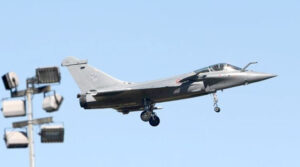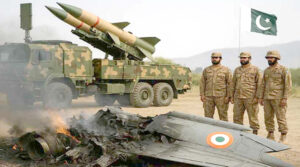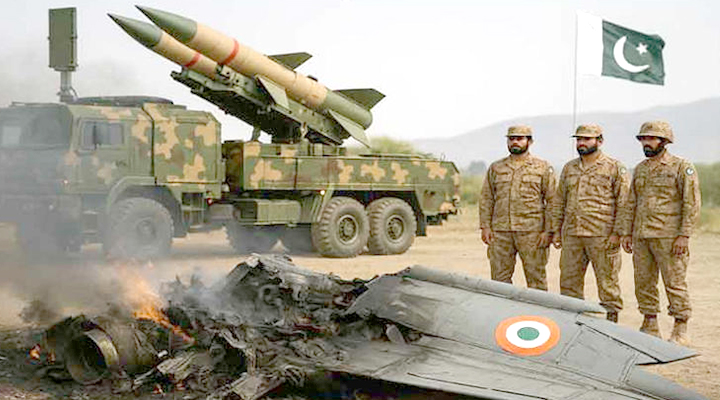Top 7 Shocking Wins Pak : How Pakistan Downed India’s Rafale with Chinese Tech
In a historic and unexpected aerial encounter, Pakistan scored one of its Top 7 Shocking Wins by shooting down an Indian Rafale fighter jet using its Chinese-built J-10C Vigorous Dragon and advanced PL-15 missile technology. The incident not only stunned global military experts but also raised serious questions about the effectiveness of Western defense systems against China’s rising defense tech.

📌 1. Midnight Alert: Tension at the Border
In the early hours of May 7, the operations room of the Pakistan Air Force (PAF) was flooded with red alerts—Indian fighter jets had crossed into airspace. For days, Air Chief Marshal Zaheer Sidhu had been sleeping inside the command facility, anticipating Indian retaliation following a deadly militant attack in Indian-administered Kashmir.
📌 2. Pakistan Deploys Chinese J-10Cs
As tensions peaked, Sidhu gave the green light for a rapid response. Pakistan scrambled its newly acquired J-10C fighters—China’s premier multirole jets equipped with long-range PL-15 air-to-air missiles. Unlike previous regional dogfights, this was not symbolic. Pakistan was targeting the crown jewel of India’s air fleet: the French-made Rafale fighter.
“He wanted Rafales,” said a PAF official present in the operations room.
📌 3. World’s Largest Aerial Combat in Decades
An estimated 110 aircraft from both sides participated in what has been labeled the largest aerial battle in decades. The conflict took place under darkness, with electronic warfare tactics deployed on both sides.
According to Pakistani accounts, at least one Rafale was confirmed downed—a first in global air combat history for the elite French jet.
📌 4. Intelligence Failure Cost India
Indian pilots believed they were flying safely outside Pakistan’s missile range, trusting that the PL-15 could only strike targets up to 150 km away. However, Pakistan’s J-10C fired the missile from over 200 km, surprising the Indian side and revealing a critical intelligence failure.
This error gave the PAF a huge tactical advantage—effectively turning the Rafales into easy targets.
📌 5. Kill Chain Advantage: Pakistan’s New Warfare Strategy
Pakistan’s use of a multi-domain warfare system, known as a “kill chain,” allowed it to connect radar, air, land, and space-based surveillance. Four Pakistani officials confirmed the use of Data Link 17, a Pakistani-developed system that linked Chinese fighters with Swedish surveillance aircraft, creating a unified battlefield image.
This gave Pakistan real-time precision tracking, something India wasn’t prepared for.

📌 6. Global Reactions and Doubts
The world watched with curiosity and disbelief. Dassault’s share price (maker of Rafale) dropped slightly. Indonesia, which had placed large orders for Rafale, publicly reconsidered its options—possibly favoring China’s J-10s now.
While France and India did not officially confirm the Rafale loss, multiple high-ranking officials hinted at the downing. One French air chief even said he had seen evidence of the Rafale’s destruction. Top 7 Shocking Wins Pak : How Pakistan Downed India’s Rafale with Chinese Tech
📌 7. Military Messaging: Capability Over Cost
While many still argue over who had better hardware, Pakistani military emphasized a powerful message: it wasn’t just about expensive weapons, but about preparedness, surprise, and smart network integration.
China’s PL-15 missile also earned international attention for its long-range capabilities, putting it in direct competition with Western missiles like the AMRAAM. Top 7 Shocking Wins Pak : How Pakistan Downed India’s Rafale with Chinese Tech
🔍 Conclusion: Top 7 Shocking Wins Pak — A Game Changer?
This encounter between two nuclear-armed nations has rewritten air combat assumptions in South Asia. Pakistan’s use of Chinese tech, coupled with innovative strategy, has now become a case study in modern electronic warfare.
This wasn’t just another skirmish — it was one of the Top 7 Shocking Wins Pak in modern military history, changing the way nations evaluate aerial combat threats and defense technology
Read More:




